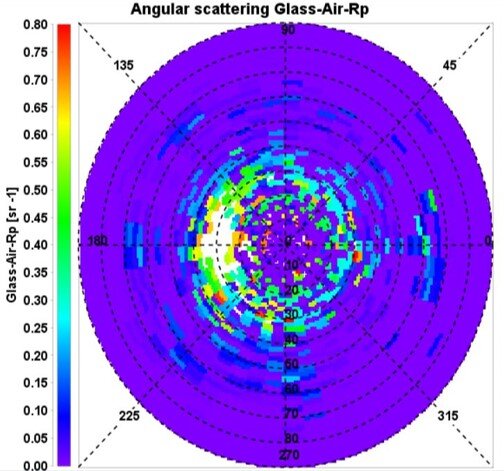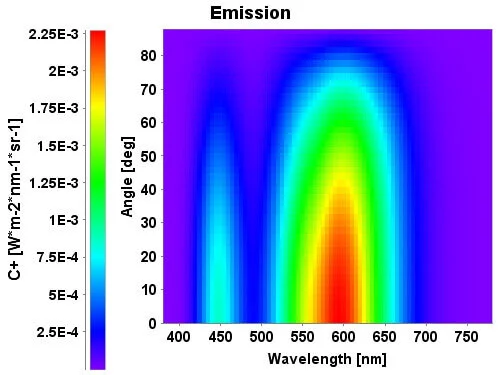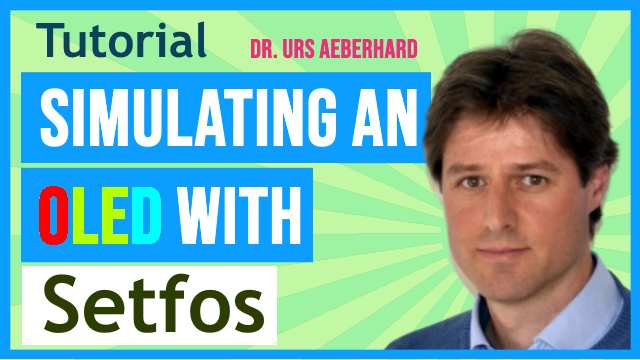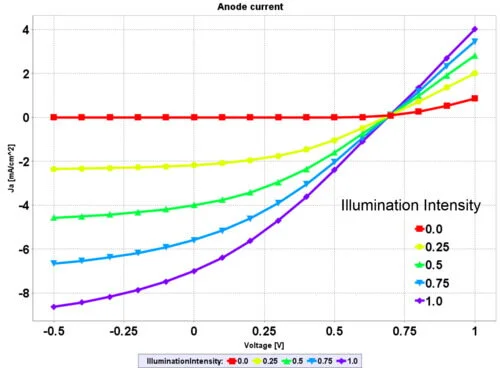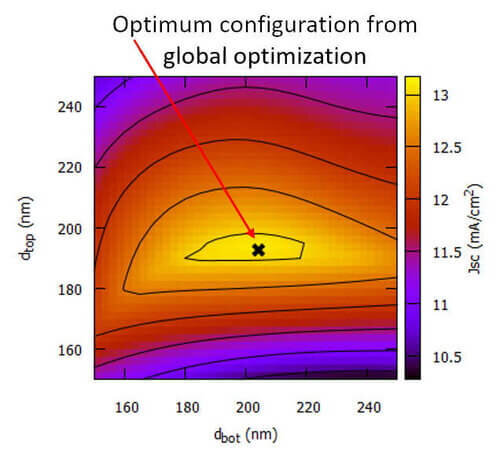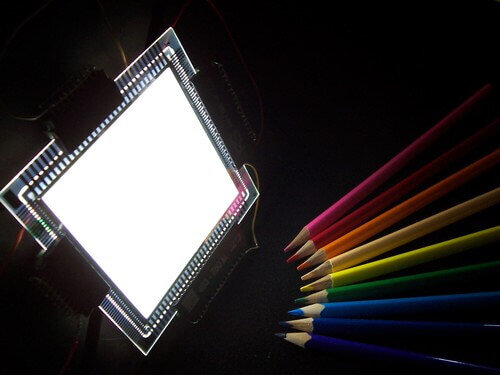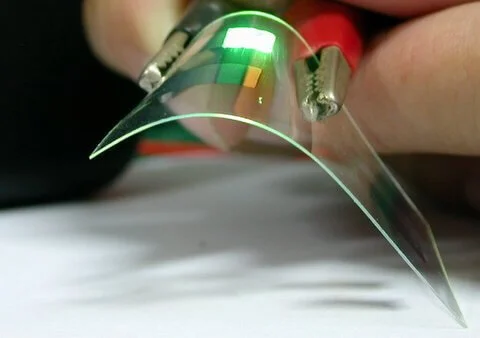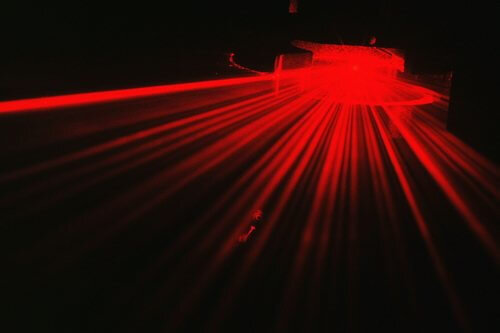setfos
Simulation Software for Organic and Perovskite Solar Cells and LEDs
GUI - OLED Simulation - Solar Cell Simulation - Device Optimization - Modules - Publications - Brochure
Validate your research with the predictive power of Setfos
Overview
Setfos (Semi-conducting Emissive Thin Film Optics Simulator) is an advanced simulation software for optical and electrical modeling of semiconducting devices. Designing LEDs & solar cells based on organic semiconductors, perovskites, and quantum-dots.
Four different modules to simulate light emission, absorption, scattering, and charge transport.
Multithreading ensures high-speed computation.
Fitting and optimization algorithms are included.
Outstanding track record: 20 years in industry and academia resulting in over 550 scientific publications. Sound materials & device models have been successfully validated by dedicated experiments.
The Setfos-Paios Integration gives access to combined characterization/simulation in DC, AC, and transient regimes.
Graphical User Interface
Intuitive access to device structure, material parameters, working files, and simulation output.
Optimization Toolbox to maximize the device efficiency.
Sweep function to analyze the influence of the material parameters on the device efficiency.
Easy access to a library of simulation examples and material property databases.
Key graphs and reports are automatically generated. Multiple simulations can run in parallel.
The graphical user interface (GUI) shows the device design and the results from the simulation in intuitive plots. The results can be exported to a number of different formats. Setfos is fully compatible with Python.
OLED Modeling
Setfos simulates OLEDs from charge injection to light extraction. The graphical user interface makes it easy to analyze and improve your devices. Modeling OLEDs from the material selection to the definition of the most efficient stack.
Modeling charge transport and recombination with the Drift Diffusion module.
Analyze optical emission spectra and wave-guided mode contributions with the Emission Module
Design out-coupling layers for efficiency and color stability.
Design scattering layers to enhance the light out-coupling with the Advanced Optics Module
Advanced device physics: quenching, excitons, traps, doping, AC & transient responses, ...
Simulating an OLED with Setfos
In this video tutorial, Dr. Urs Aeberhard (Fluxim AG / ETH) demonstrates how to design, simulate and optimize an OLED stack.
Solar Cell Modeling
Easily calculate the short circuit current (Jsc), open-circuit voltage (Voc), and fill factor. Tweak the layer stack and add light scattering layers to enhance light absorption.
Specific for organic, quantum-dots, and perovskite solar cells.
Optimize the device for the AM1.5 (or for specific wavelengths) with the Absorption Module.
Curve fitting & parameter extraction. Understanding the origin of the hysteresis in perovskite solar cells.
AC simulation of transient experiments, as photo-CELIV. Easy to couple with the electrical characterization systems Paios.
Advanced device physics: SRH-recombination, excitons, ...
Designing anti-reflection coatings or transparent solar cells.
Simulating a Solar Cell with Setfos
In this video tutorial, Dr. Urs Aeberhard demonstrates how to design, simulate and optimize an organic solar cell.
Parameter Sweep and Device Optimization
Sweep parameters to understand their effect on the device properties.
Setfos contains a powerful optimization engine that can be used to find the device layout that gives the highest efficiency automatically.
You can fit parameters to experimental data from DC, AC, and transient analyses of solar cells and LEDs.
You can choose between different visualizations of the results to easily Light Emission Simulation
Setfos uses the dipole emission model to predict the light emission characteristics of an OLED. Several device properties can be modelled:
Electroluminescence emission pattern.
Micro-cavity effects by thin-film optics.
Photophysical properties such as efficiency, angular colour, and brightness changes.
Excitonic processes in OLEDs by combining optical and electrical simulation.
Waveguided and plasmonic modes, quenching, distribution, and orientation of the emitters.
A number of scientific publications demonstrate the potential of Setfos for OLED modeling.
Efficiency and Emitted Color
Setfos calculates the optical parameters of an OLED by taking into account the full micro-cavity behavior. This includes but it is not limited to:
CIE xy color coordinates.
Brightness (cd/m2).
Luminous Efficacy (Lm/W).
Luminous Current Efficiency (lm/A).
Correlated Color Temperature (CCT).
Color Rendering Index (CRI).
Reflectance, transmittance, and absorbance.
Mode Analysis
Setfos Mode Analysis can analyze light emission through the different emission channels of an OLED. The emitted light either escapes to the far field or is waveguided inside the OLED layers. Without outcoupling structures, only the light emitted inside the escape cone is visible to the observer.
Mode analysis simulation calculates the contribution of the different optical modes to the total emitted power:
Air modes escaping to the outside.
Substrate modes waveguided in the carrier substrate.
Organic modes waveguided in the organic semiconductor stack.
Plasmon modes coupled to the metal electrodes.
Non-radiative quenching losses.
Modes can be inspected across the spectrum or summarized, considering the emitter's spectral distribution.
Coatings, Filters, and Thin Film Optics
An OLED design is not limited to the stack of organic semiconductors. There are also colour filters and anti-reflection layers that are used to obtain a higher lighting efficiency.
Setfos calculates the colour, angular variation, and polarization of the whole OLED stack, including coherent optics in the microcavity and coatings incoherently coupled through the substrate.
Emitter Profile, Optical Index, Dipole Orientation
Powerful fitting algorithms let you extract material parameters from measurement data. The optimization routines find the optimal combination of several variables.
Fitting of the emission zone in a complex multilayer stack. Find the spatial distribution of the emitting molecules.
Determine the optical n & k values from reflectance and transmittance measurements. This uses the Sellmeier, Tauc-Lorentz, or Cauchy model.
Use spectral measurements to determine the intrinsic spectrum of an emitter/host system.
Determine the orientation of the emitter dipole by polarized spectroscopy or angular measurements.
Position-dependent Purcell Effect from the data obtained by experiments or simulations.
